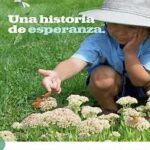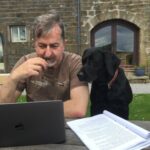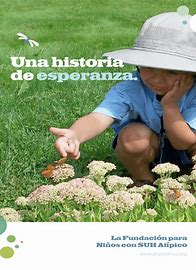aHUS in the social media is now much more commonplace. In this latest article in the series “Before aHUS Endeavours Fade” the first aHUS social media platform is recalled. An aHUS “ Facebook” before Facebook.
The first aHUS website for patients had been created by Bill and Cheryl Biermann soon after they had formed the first patient organisation , The Foundation for Children with atypical HUS. ( see article link below)

Bill and Cheryl were supported by volunteers including Phyllis Talbot and Linda Burke.
In 2009 Linda and her family took their volunteering to another level when they provided a second website to the Foundation.
The first website continued using the original domain name but Linda’s brother Steven Greene funded and built the second one using the Foundation’s name on the NING.com platform. It was described as the Foundation’s NING site.
Launched in 2009 Steven designed and developed this new website which was a lot different to a standard website. NING was a relatively new platform that integrated features of the social media with those of a “ traditional “ web site structure

.Those who remember it would probably recall the landing page having found it on an internet search.
At first look it would be a “noisy” page there was so much to see. This was after all primarily an awareness website but it could also be interactive with its viewers.
Any viewer could look at all the material in the website.
But viewers could also register and sign in to become members of the website wherever in the world they were from. ( Note: The author counted the 600 plus members of the website were from 28 countries at one point. Most though were from the USA).

Membership of the website was just like the experience with Facebook groups today but it was not a closed group. Most important for advocates in those days was raising awareness of aHUS and its treatment.
Members of the website became part of a movement to make aHUS better known around the world , not only to just chat among themselves and support each other but to raise the profile of this little known ultra rare disease.
People could chat with others and contribute to the content, as well as explore the resources about aHUS provided mainly by Linda , including news, videos, booklets and leaflets about aHUS. and discussion “threads” about aHUS topics.
On registration and saying “ hi” new site members were greeted by one of the volunteers, Cheryl , Phyllis or Linda. There was a scroll section on the left hand side of the screen where all messages appeared and where any interaction could be viewed initially. Like Facebook today these messages would disappear from sight on screen eventually.
Except there were two records which were kept. One related to the member and other members could visit their “ page” recording all interactions with and from the member.
Also and this was perhaps the bigger part of the website there were subject threads to which members could contribute and read, So unlike Facebook where a thread disappears from view , anyone who wanted to read all contributions could start at the beginning and read the full history of the topic discussed. There were dozens of such threads.
Just below the welcoming and initial message section mentioned above, new contributions to any of the subject threads appeared like in Facebook. Viewers could navigate directly from them to the discussion threads.
There was also a visible count of the number of comments made on a thread and the number of times a thread was viewed.
One of the most notable threads in the early years was about a new drug with potential for treating aHUS, i.e. eculizumab. There were more than 3000 views of that thread, so spreading awareness of its potential when few people were aware of its existence . The NING website coming online at just about the time the eculizumab trials were beginning. Some early users gave their stories about accessing it. The website was really at the leading edge of aHUS drug development news
Another notable thread was about aHUS in adult patients which, in time, became the most viewed and “active” thread with 4000 or more views, before the website went dark in 2016.
There were several threads which members added like one about aHUS research which was began and kept up to date by a member named Grace. Some of the discussion threads were duplicated, just as in Facebook today, where the same topic repeats itself every so often. An index of threads was provided to help continuity of the discussions for each thread.
Another feature was that members could message each other privately just as can be done on social media. So the website provided the most visible support needed to all but members could support and share notes with other members in private.
The best of both worlds at a time when the aHUS community was new and the most important objective was to raise the profile of aHUS and continue to show people that they were not alone. A core aim of the Foundation.
The site was monitored so that any unsuitable or improper comments could be scrubbed from view.
The author recalls visiting the site for the first time and being put off by its appearance of being for parents of young children. aHUS being thought a children’s disease even then.
However on returning to the site, having become an advocate , its potential was realised. Finding the discussion thread and messaging facility provided an opportunity to raise awareness of aHUS events in the UK before a UK aHUS website could be launched.
There were several thousands of views of the UK aHUS thread about how the UK patients got together to access treatment which was free for all. So the NING site played a part.
The author also read most of the content to extract lists of aHUS comorbidities mentioned by members in the discussion thread. This evidence was used in the aHUSUK submission to the health policy decision making committees in the UK. It was the most comprehensive list of the effects of having aHUS and being on dialysis “for life’ that existed at that point. Perhaps the first example social media data mining about aHUS albeit done manually. This is now done by Pharma companies using “ bot” tools to search and collect patient data from Facebook and other social media pages.
This first era of a social media website remained a global resource for over 8 years. Thanks to the technical skills of Steven and the content management of Linda.
Article No 683
Previous articles in series

Bill and Cheryl Biermann -Before aHUS Endeavours Fade
The aHUS endeavours series continue with an interview with Bill and Cheryl Biermann whose family was affected by aHUS at the turn of the century. Whilst coping with a family…

Dr Leonard Bell – Before aHUS Endeavours Fade
Those new to the disease aHUS may not know the significant contribution that Dr Leonard Bell has made to their treatment today. Leonard, or Lenny as he was called ,…

The early days of aHUS Research (Before aHUS Endeavours Fade)
Global Action is privileged to present a second article in the series BEFORE aHUS ENDEAVOURS FADE. Celebrating the work of people whose research made a significant difference for aHUS patients.…


